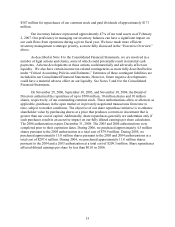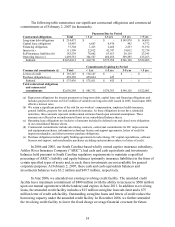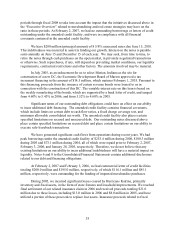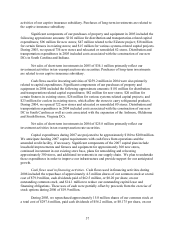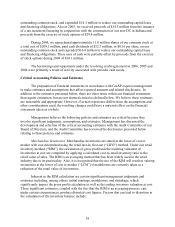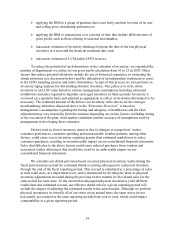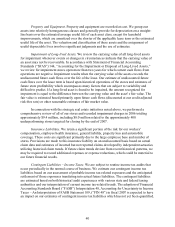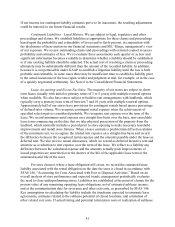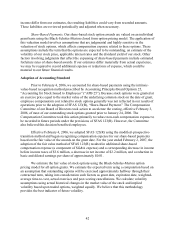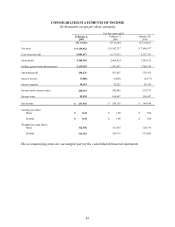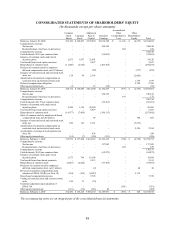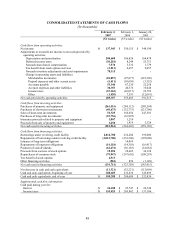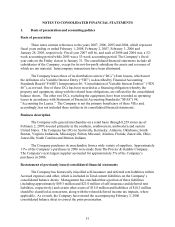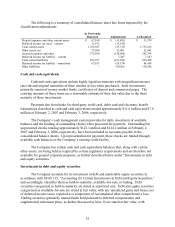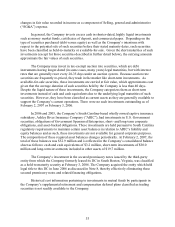Dollar General 2006 Annual Report Download - page 45
Download and view the complete annual report
Please find page 45 of the 2006 Dollar General annual report below. You can navigate through the pages in the report by either clicking on the pages listed below, or by using the keyword search tool below to find specific information within the annual report.Accounting Pronouncements
In July 2006, the Financial Accounting Standards Board (“FASB”) issued Interpretation
48, “Accounting for Uncertainty in Income Taxes” (“FIN 48”), which will require companies to
assess each income tax position taken using a two-step process. A determination is first made as
to whether it is more likely than not that the position will be sustained, based upon the technical
merits, upon examination by the taxing authorities. If the tax position is expected to meet the
more likely than not criteria, the benefit recorded for the tax position equals the largest amount
that is greater than 50% likely to be realized upon ultimate settlement of the respective tax
position. The interpretation applies to income tax expense as well as any related interest and
penalty expense.
FIN 48 requires that changes in tax positions recorded in a company’ s financial
statements prior to the adoption of this interpretation be recorded as an adjustment to the opening
balance of retained earnings for the period of adoption. FIN 48 will generally be effective for
public companies for the first fiscal year beginning after December 15, 2006. We anticipate
adopting the provisions of this interpretation during the first quarter of fiscal 2007. No
determination has yet been made regarding the materiality of the potential impact of this
interpretation on our financial statements.
In September 2006, the FASB issued SFAS 157, “Fair Value Measurements.” SFAS 157
provides guidance for using fair value to measure assets and liabilities. The standard also
requires expanded information about the extent to which companies measure assets and liabilities
at fair value, the information used to measure fair value, and the effect of fair value
measurements on earnings. The standard applies whenever other standards require (or permit)
assets or liabilities to be measured at fair value. The standard does not expand the use of fair
value in any new circumstances. SFAS 157 is effective for financial statements issued for fiscal
years beginning after November 15, 2007, and interim periods within those fiscal years. We
currently expect to adopt SFAS 157 during our 2008 fiscal year. No determination has yet been
made regarding the potential impact of this standard on our financial statements.
In September 2006, the FASB issued SFAS 158, “Employers’ Accounting for Defined
Benefit Pension and Other Postretirement Plans,” which requires companies to recognize the
overfunded or underfunded status of a defined benefit postretirement plan (other than a
multiemployer plan) as an asset or liability in its statement of financial position and to recognize
changes in that funded status in the year in which the changes occur through comprehensive
income. This Statement also requires a company to measure the funded status of a plan as of the
date of its year-end statement of financial position, with limited exceptions. A company with
publicly traded equity securities is required to initially recognize the funded status of a defined
benefit postretirement plan and to provide the required disclosures as of the end of the fiscal year
ending after December 15, 2006, and we have complied with these provisions to the extent
material. The second phase of SFAS 158 includes a requirement to measure plan assets and
benefit obligations as of the date of a company’ s fiscal year-end statement of financial position
effective for fiscal years ending after December 15, 2008. No final determination has yet been
made regarding the timing or adoption of the second phase of SFAS 158 on our consolidated
financial statements, however, because we currently have one supplemental executive retirement
plan with one executive participant, the impact, if any, is expected to be minimal.
43


